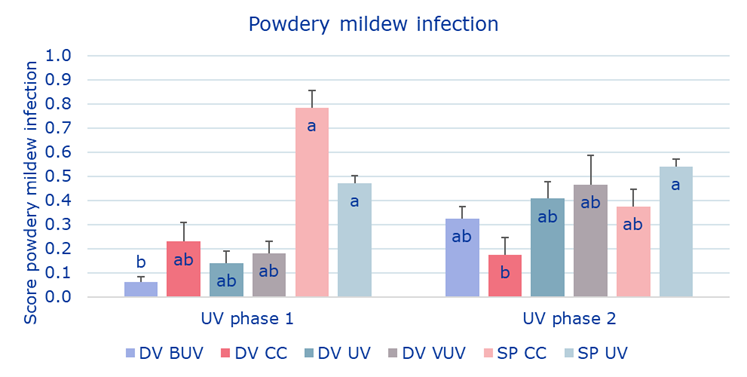Two weeks ago, the last UV-C treatment was given in the cucumber trials of the project. The last trial served as a demonstration and validation, focusing on the effectiveness of UV in treating powdery mildew. Two varieties were tested, Dee Viate (DV) and Sepalin (SP), both with 50 J/m² UV (UV) and without (CC). Additionally, objects were added for Dee Viate; one where UV was combined with a preventive biological treatment (BUV) and another where a reduced amount of UV was given on darker days (VUV).
The research showed even better results compared to previous trials. During the first six weeks of treatment (phase 1), the powdery mildew infection was more severe in objects without UV, despite the application of chemical treatments once a week. In the next five weeks (phase 2), the chemical treatments managed to slightly control the mildew pressure a better than the UV-treatments. However during these five weeks, again four applications of chemical products had to be executed, whereas during the whole cultivation no treatments – biological or chemical – were used in the object with UV. Combining UV with a preventive biological fungicide (BUV) improved the effectiveness even a bit more. Utilizing lower doses on days with lower solar radiation resulted in a higher infection rate. The object with lower doses (VUV) shows a nice effectiveness, but the continuous dose of 50 J/m² still controls powdery mildew better.


